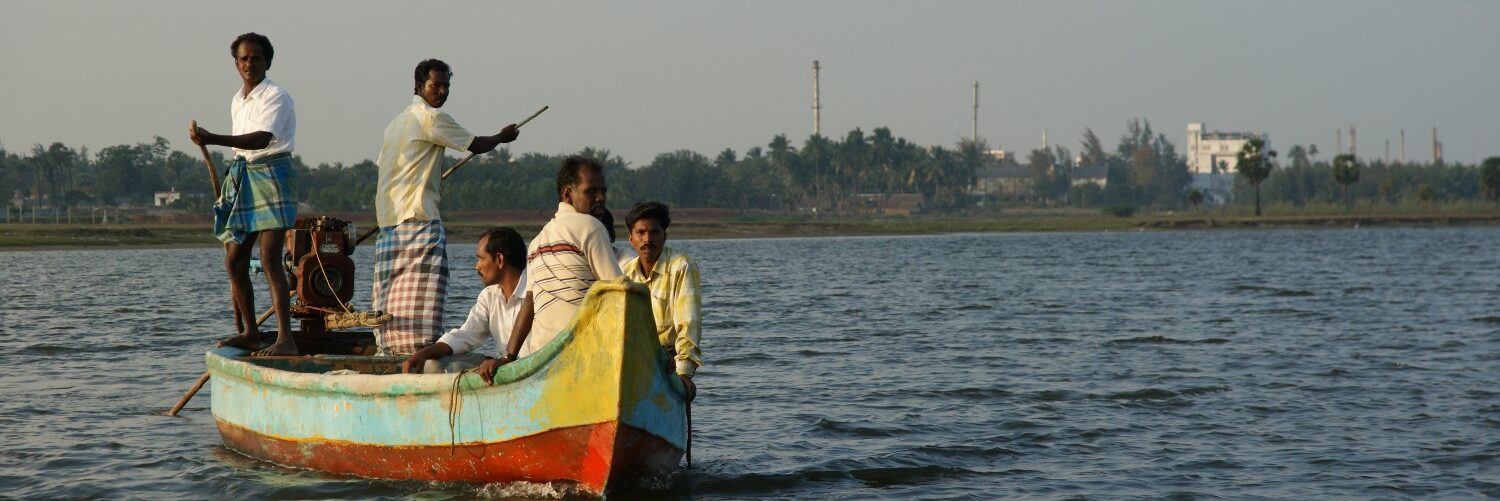Aug 28, 2013
Srestha Banerjee
Down To Earth
Activists say expert appraisal committee’s clearance to proposed ultra mega power project based on false information furnished in EIA report
In May this year, the Expert Appraisal Committee (EAC) of the Union Ministry of Environment and Forests gave the go-ahead to the Cheyyur Ultra Mega Power Project (UMPP) in Kancheepuram district of Tamil Nadu. Local residents and environmentalists of Cheyyur who have been opposing the 4,000 MW power project are planning to move court to stop the project proposed by the Coastal Tamil Nadu Power Ltd. (CTNPL) a special purpose vehicle of public sector unit Power Finance Corporation Ltd for developing the project.
According to Shweta Narayan of advocacy group Community Environmental Monitoring Program, the project has been approved on the basis of falsified and misrepresented information. She says several facts and information in the project’s environment impact assessment (EIA) do not match ground reality. The residents of Cheyyur and Community Environmental Monitoring group are planning to file a criminal complaint on the matter in the local magistrate’s court.
EIA, documents falsify reality
The misrepresentations made by CTPNL have been brought out in a reportScience, Non-Science and the Dubious Role of ‘Experts’ in Environmental Due Diligence: A case study of Cheyyur UMPPprepared by Community Environmental Monitoring Program. The highlights of the report relate to site selection, land requirement for the power plant and ash dyke, type of land appropriated for the project, ecological resources in the area, land cover of the area and livelihood loss.
The report says the project site that has been approved for development of the power project is different from the site that was inspected by the Central Electricity Authority (CEA) site selection committee. The site that was originally visited was near Cheyyur village of Cheyyur taluk, whereas the current site is near Vedal village of Cheyyur taluk, with the ash pond at Vilangadu village.
Narayan says though the project proponents have shown the study area as largely barren land, it is actually 80 per cent agricultural land which has significant cash crop production.
The report also notes the project EIA says that there is no sensitive ecosystem in the study area. In reality about 27.5 per cent of the study area is a waterbody. It has tidal mudflats, sea grass beds, mangroves, and sand dunes, all of which have been identified as eco-sensitive zones. The area required for the power plant and its ash dyke also remains a matter of controversy as various documents provide varying figures, varying between 415 and 489 hectares (ha).
The project proponents have also ignored the impact the project will have on livelihood of fisher folk in the study area as initially identified by the EAC. Later, following the committee’s direction the proponents provided information on fishing families and fish catch of the area. They further mentioned that no fishing families will be affected by the project.
However, such assurance is not enough for Marimuthu, a local fisher. The project, particularly the captive coal jetty, is going to affect our access to the coast, which will definitely affect out fishing activity,he says. He and six other fishers have filed a case against the project in the southern bench of the National Green Tribunal. The fishers have joined the local environmental advocacy group in pursuing their case further.
When contacted, the company spokesperson refused to comment on the project.
Regulatory bodies under cloud
People aggrieved by the project say that besides environmental and social impacts of the project, they will also challenge the basis of regulatory approvals in court. Though the matter has been deliberated in various meetings of the EAC from January 2010 onwards, Narayan expressed dissatisfaction with the way the committee has dealt with the case. It seems that the expert appraisal committee has not applied its mind while deciding on the project as they have overlooked significant shortcomings in the EIA report. She informed that the Coastal Regulation Zone clearance granted to the project in November 2012, is already being challenged in the southern bench of NGT. Now the decision of the EAC, which is unacceptable for the community, will be challenged.
